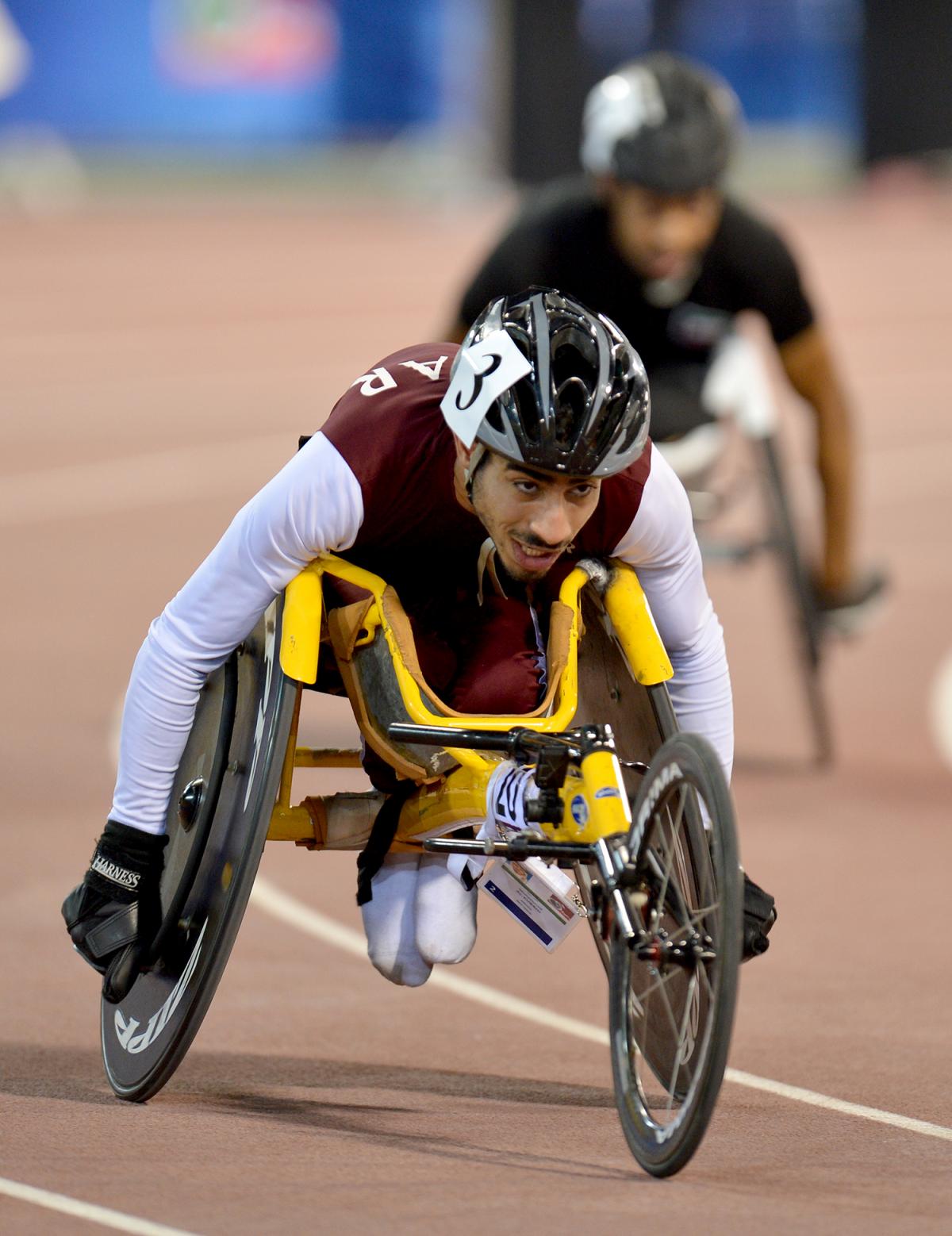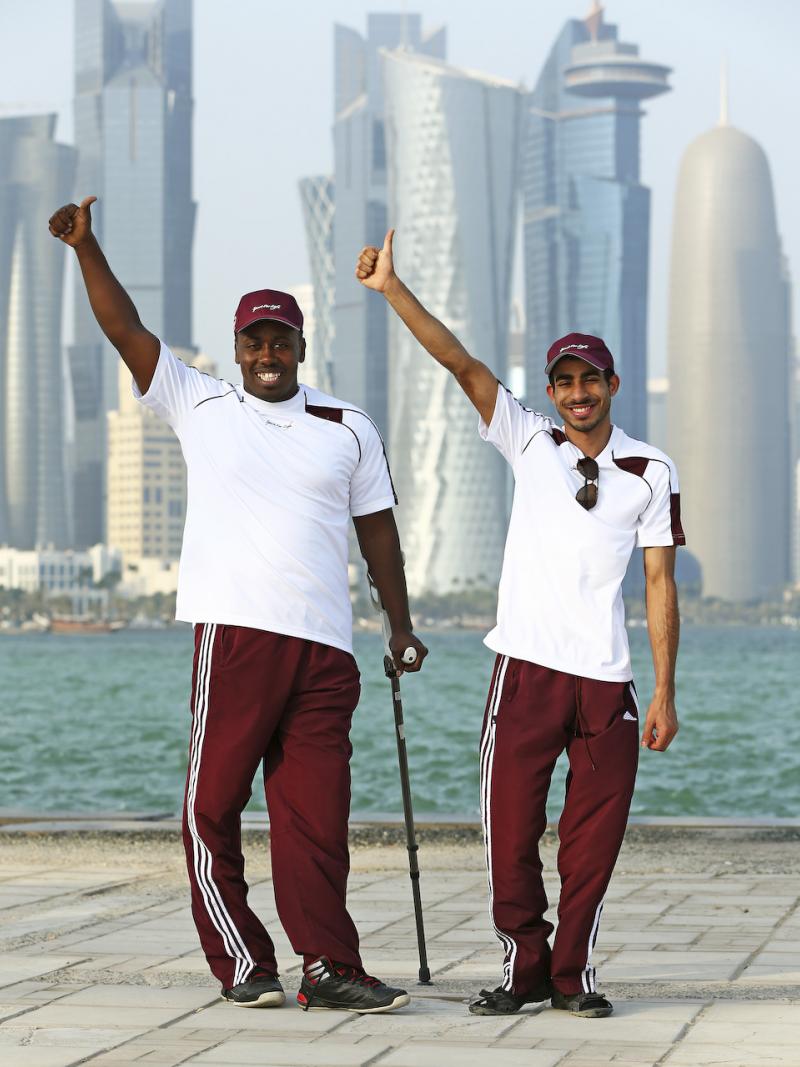Doha 2015 Newsletter - Understanding para-athletics: T32-38 and F31-39
The 30s sport classes are allocated to athletes with athetosis, ataxia and/or hypertonia. (Arabic version below) 05 Oct 2015
Qatar's Abdelrahman Abdelqader is one of the medal hopes for the home team at the 2015 IPC Athletics World Championships.
The impairments typically affect the ability to control legs, trunk, arms and hands and a common condition for this sport class is cerebral palsy. Five of Qatar’s team for the World Championships compete in this class, including world record holder, Abdelrahman Abdelqader.
Other notable athletes competing in this class include multiple Paralympic and World Champion in the 100m, 200m and 400 T38, Evan O’Hanlon of Australia, and multiple Paralympic and World Champion in the 800m and 1500m T37, Michael McKillop of Ireland.
Cerebral palsy is the general term for a number of neurological conditions that affect movement and co-ordination. Neurological conditions are caused by problems in the brain and nervous system. Specifically, cerebral palsy is caused by a problem in the parts of the brain responsible for controlling muscles. The condition can occur if the brain develops abnormally or is damaged before, during or shortly after birth.
IPC Sport Classification aims to minimize the impact of impairments on the sporting discipline, with a prefix of “T” used to denote track/jump events while the “F” prefix is used to indicate field events. In the 30s sport classes, the lower the number is, the more significant the activity limitation. Athletes in the sport classes 31-34 compete in a seated position, e.g. in wheelchair racing or using a throwing chair. In contrast, athletes in the sport classes 35-38 show a better function in their legs and better trunk control and therefore compete standing, e.g. in running events, long jump or throwing events.
____
فهم طبيعة ألعاب القوى لذوي الإعاقة
تصنيف T32-38 و F31-38
تختص هذه الفئات بالرياضيين الذين يعانون من مرض الكَنَع، أو التَهَزّع و/أو فرط التوتر، والتي تعد جميعها إعاقات تؤثر في قدرتهم على السيطرة على الأرجل والجذع والذراعين واليدين. وسيشارك في بطولة العالم خمسة رياضيين قطريين في هذه الفئه من ضمنهم حامل الرقم القياسي العالمي عبدالرحمن عبدالقادر.
هناك العديد من الرياضيين العالميين الذين يشاركون في هذه الفئات من ضمنهم أبطال الألعاب البارالمبية، وأبطال العالم مثل إيفان أوهانلون من أستراليا الذي يشارك في سباقات 100 متر و 200 متر و 400 متر في فئة T38، و أيضاً مايكل مكيلوب من أيرلندا الذي يتنافس في سباقات 800 متر و 1500 متر T37.
الشلل الدماغي هو مصطلح شامل يتضمن مجموعة من الحالات المرضية الحركية التي لا تتدهور، وغير المعدية والتي تسبب عجز جسدي أثناء نمو الإنسان، وذلك في أجزاء مختلفة من الجسم مرتبطة بأداء الوظائف الحركية.
وُضِعَ نظام التصنيف مِن قِبل اللجنة البارالمبية الدوليّة للحد من تأثير الإعاقة على الانضباط الرياضيّ. ويتكونُ التصنيف من البادئة "T" لرياضة المضمار/الوَثْب والبادئة "F" للمنافسات الميدانية. كما هو الحال مع الفئات الرياضيّة الأخرى، كلما انخفض العدد كلما زادت أهمية تأثير الإعاقة. يتنافس الرياضيون في الفئات الرياضيّة 31-34 وهم جالسين، كما هو الحال في سباق الكراسي المتحركة، أو باستخدام كرسي الرمي، في حين أن الرياضيين المندرجين ضمن الفئات الرياضيّة 35-38 يتنافسون وقوفاً بسبب القوة النسبية لأقدامهم.

 Facebook
Facebook
 Instagram
Instagram
 Twitter
Twitter
 Youtube
Youtube

